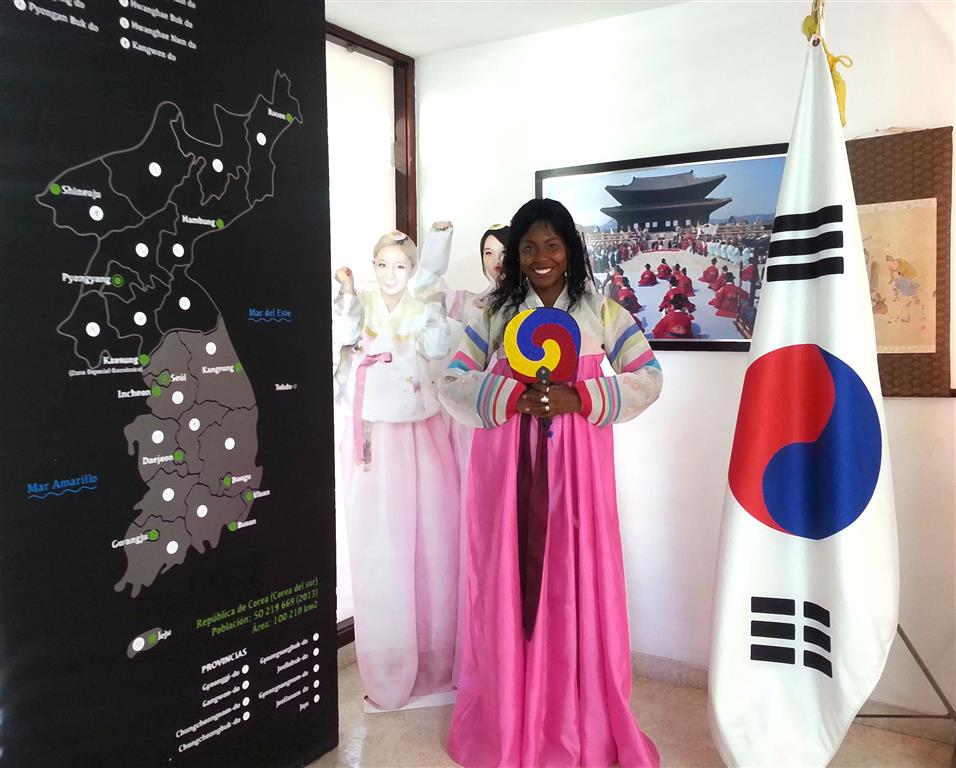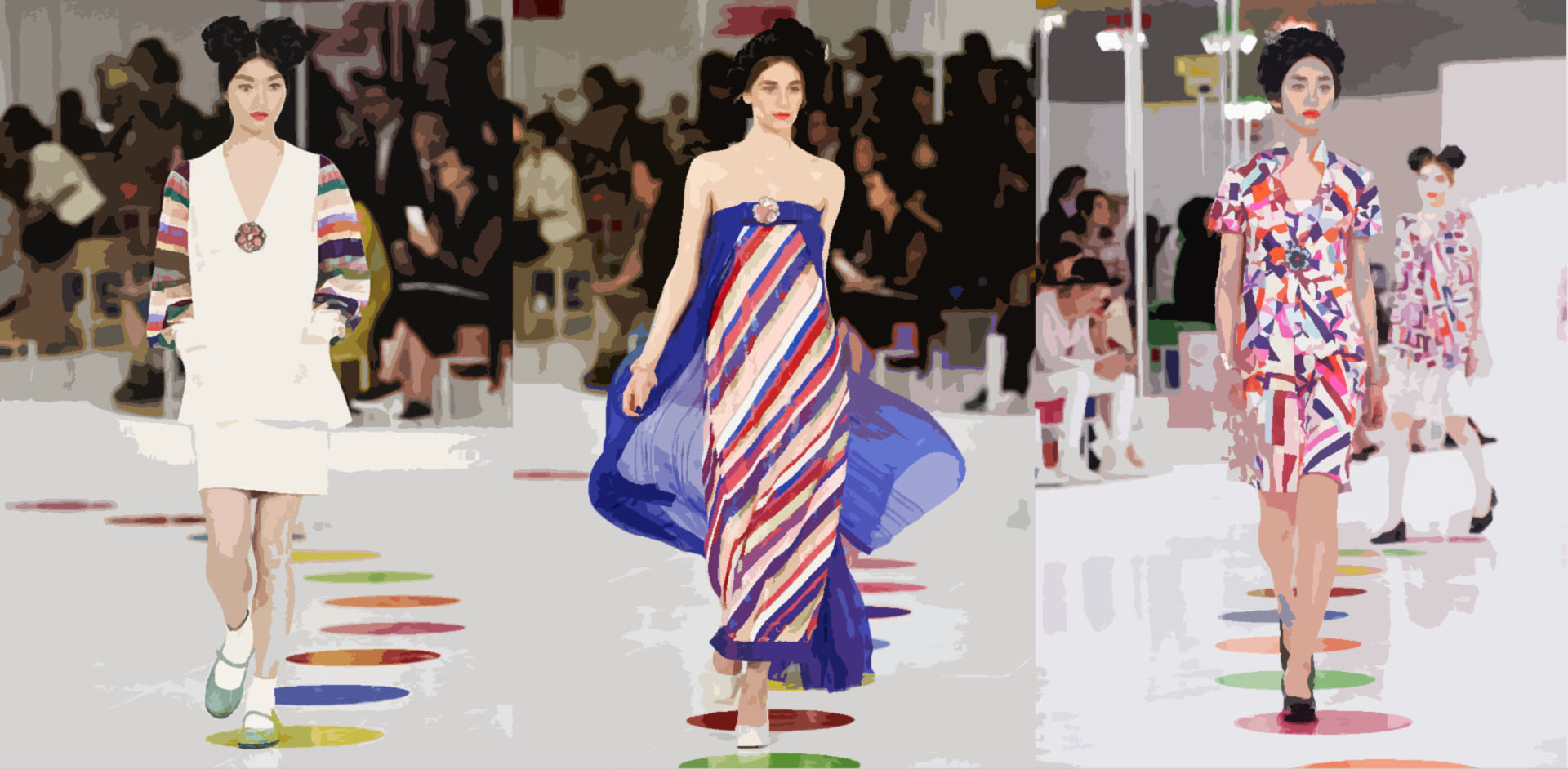- 한국어
- English
- 日本語
- 中文
- العربية
- Español
- Français
- Deutsch
- Pусский
- Tiếng Việt
- Indonesian
By Honorary Reporter Dayviana Diaz from Cuba
Photo = Flickr, Dayviana Diaz

Saekdong, with its vibrant and elegant aesthetic, is a unique expression of Korea that reflects the harmony and beauty of Korean culture. This was my first experience wearing a Hanbok with an adult saekdong jeogori (upper garment). (Dayviana Diaz)
The origin of saekdong (multi-colors) comes from the ancient Korean kingdom of Gojoseon, where the manufacturing of iron, fur, dyes and silk was developed. Saekdong was originally called gyeong geum, a fabric in which double-colored strands were vertically woven in repeating patterns. This fabric originated around 500 B.C. and became a famous export to neighboring countries during this time.
Saekdong is a satin with colored vertical bands decorated with simple embroidered patterns of things like clouds, whirlpools and animal antlers in complex combinations of straight and curved lines. The five or seven colored stripes are inspired by the concept eumyang-ohaeng, or yin and yang and the five elements, where the universe's creative forces were yin and yang (eumyang) that created the five elements wood (blue), fire (red), earth (yellow), metal (white) and water (black). Together they represent the five traditional colors of Korea.
The stripes of equal width represented equality, peace, the worship of heaven, justice and the good manners of the Gojoseon people. This showed the natural and elegant beauty that represented the power of the king and the gods. Over the years, gyeong geum evolved into the saekdong of today, with embroidered patterns simplified to further highlight the beauty of the colored lines.

Saekdong is a common theme in traditional Korean clothing and fabrics. From left are a Hanbok jeogori (upper garment) for adults, ones for children and gulle, a decorative fabric. (Flickr)
Though saekdong can be found in a wide variety of colors, the main ones are red representing the sun and fire; blue representing heaven, creation and the supernatural; yellow representing Earth, hope and prosperity; white representing fall; and black controlling humanity's wisdom. The Gojoseon people believed that this combination protected them from evil spirits and thus attracted good fortune.
Finally, several shades from the color palette were added to enrich the mix of hues and enhance the combination. A saekdong characteristic is that it is never unpleasant to look at, and its complementary combinations evoke a perfect color harmony.
Uses
The saekdongot is a Hanbok that uses the patterns of modern saekdong, and was used from the Goryeo Dynasty period (918-1392). Today the clothing is used in celebrations, by shamans and in Hanbok for children ages 1-7 as a means of protection against evil spirits. It is also used in Hanbok pieces such as the jeogori (jacket with sash), magoja (buttoned jacket) and durumagi (coat).
Everyone used the costume in ancient times from the king to his people, and it became the leading symbol of abundance and prosperity of the Gojoseon period. Today it is also used during holidays such as Seollal (Lunar New Year) and Chuseok (Korean Thanksgiving) in Hanbok that represent the joy, fun and excitement of the Korean people.
Asiana Airlines also uses saekdong in its flight attendant uniforms and the exterior design on the tail of its planes. Even big fashion names have used saekgong in their shows, like in the first Chanel Cruise Collection at Seoul's Dongdaemun Design Plaza in 2015.

Asiana Airlines uses saekdong in its uniforms and on its planes. (Dayviana Diaz)

Saekdong in 2015 on the catwalk of the Chanel Cruise Collection at Seoul's Dongdaemun Design Plaza. (Dayviana Diaz)
enny0611@korea.kr
*This article is written by a Korea.net Honorary Reporter. Our group of Honorary Reporters are from all around the world, and they share with Korea.net their love and passion for all things Korean.